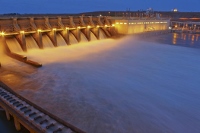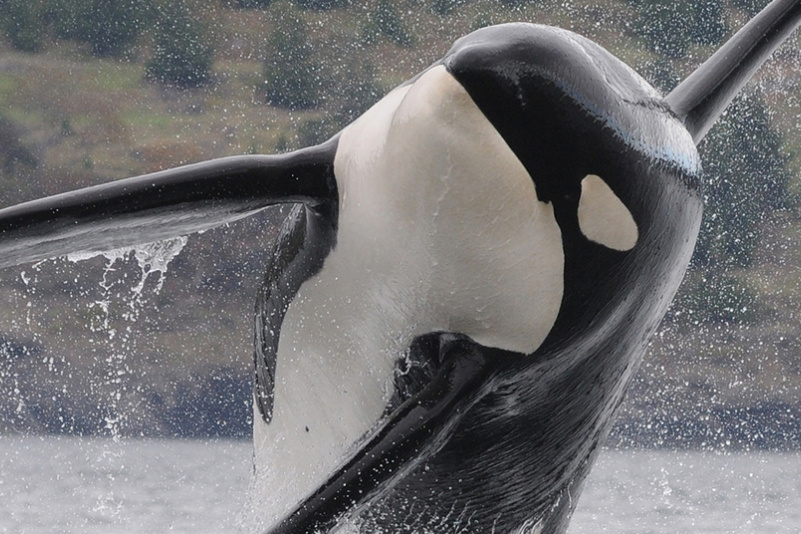A draft report from Washington Gov. Jay Inslee's office summarizes a long-running debate over whether four hydroelectric dams on the Lower Snake River should be taken down to restore king and other salmon populations.
The report issued Dec. 20 makes no recommendations — except for ways that multiple groups involved in the debate, including fishermen, indigenous tribes, power producers and renewable energy advocates — might move the long-deadlocked debate forward.

The Ice Harbor Dam on the lower Snake River. Corps of Engineers photo.
The task force made other recommendations, including reducing vessel disturbance and noise and reducing the whales’ exposure to toxic contaminants. But it stopped short of calling for action on the Lower Snake River dams, blamed by some coastal stakeholders for the decline of king salmon.
The subsequent $750,000 study ordered by Inslee aims to bring together the divergent interest groups. A first public workshop on the report is scheduled for Tuesday evening in Clarkston, followed by a Jan. 9 session in Vancouver, Wash., and Jan. 13 in Pasco. Online comments will be accepted through Jan. 24.
“I encourage Washingtonians to get engaged in the public comment period over the next month and share their input on what should be done,” Inslee said in releasing the report. “We need to hear from a variety of people from different regions and perspectives.”
The report notes how all parties remain far apart on the issues.
“People told us that the manner in which the issue of dam removal is raised contributes to the overall frustration and negative reaction of those who live in southeastern Washington and are closest to the dams,” the report authors wrote, adding that dam supporters felt eastern Washington coastal stakeholders belittle their legitimate concerns.
The team analyzed 40 years of data and found that as fishing pressure diminished by stricter regulation since the 1970s, the northern resident killer whales tripled their abundance.
The whales’ preference for larger salmon may be a major factor behind the decline of larger king salmon — and may also be intercepting more salmon before they reach the critically endangered southern population, now around 73 animals, the study suggests.







